Our Top Pick for Investing in US Renewable Energy
Solar and storage shine to begin 2024, as onshore wind installations have subdued.

Though natural gas remains the dominant fuel source for US power generation (accounting for over 40% of generation in the first quarter of 2024), the overwhelming majority of new capacity additions have been concentrated in renewable energy, including solar, wind, and battery storage.
Natural gas benefits from its US abundance (low cost) and baseload qualities. But coal generation has steadily declined since mid-2021: Wind and solar power appear to be taking over this share of the market, with notable upward progress in the past two quarters.
Following Coal's Decline in Overall Generation Share, Wind and Solar Creep Upward
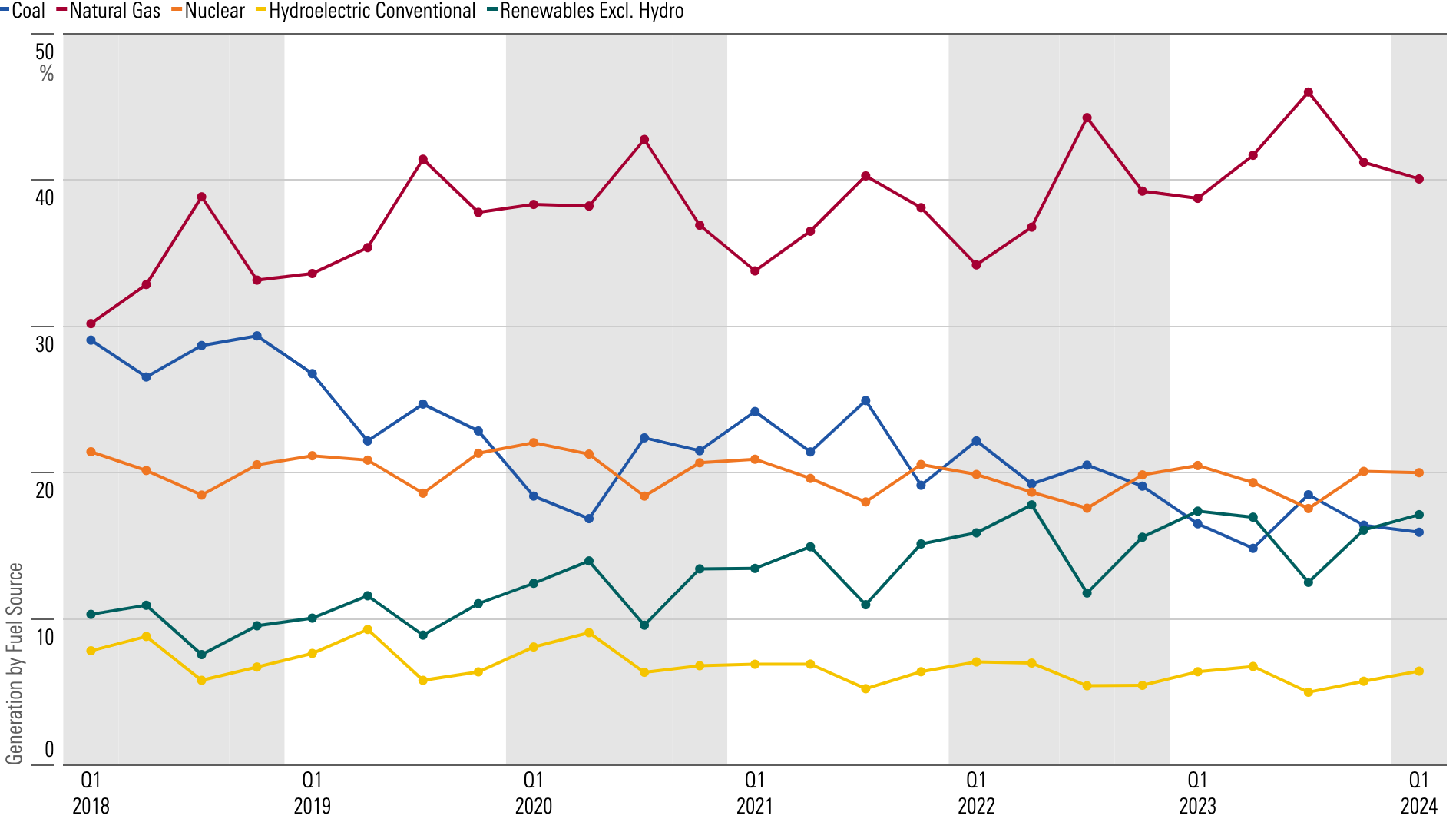
Renewables (excluding hydroelectricity) accounted for nearly all new generation capacity in first-quarter 2024. They benefit from their zero-emission profile, low cost, tax incentives, and small average investment size (no large project risk). We expect renewables to continue to comprise the bulk of new capacity additions, with select natural gas additions to ensure reliability.
Looking longer-term, we believe wind and solar will rise to nearly 45% of generation by 2032, approximately 3 times current levels. The bulk of the share gains will be from coal, which we forecast to continue to decline because of its high emission profile.
Solar Capacity Additions: A Strong Start to 2024
Solar capacity additions rose 155% between the first quarter of 2023 and the first quarter of 2024, up to 5.9 gigawatts from 2.3 gigawatts. We expect 2024 additions to surpass 2023′s record.
Based on EIA data for planned capacity additions in 2024, net solar capacity additions are expected to see another year of strong growth. Overall, the EIA anticipates more than 35 gigawatts of installed solar to be added.
Over the medium term, renewed uncertainty regarding solar panel imports could delay projects, like what we saw in 2022.
In March 2024, a group of US solar manufacturers filed an antidumping/countervailing duty petition against certain Southeast Asian countries. This has created increased uncertainty in the market regarding future imports. Ultimately, we believe the current administration will balance the interests of US manufacturers with solar developers, ensuring any bottleneck does not persist for too long.
Solar Capacity Additions Continue to Rise, in Line With Our Expectations
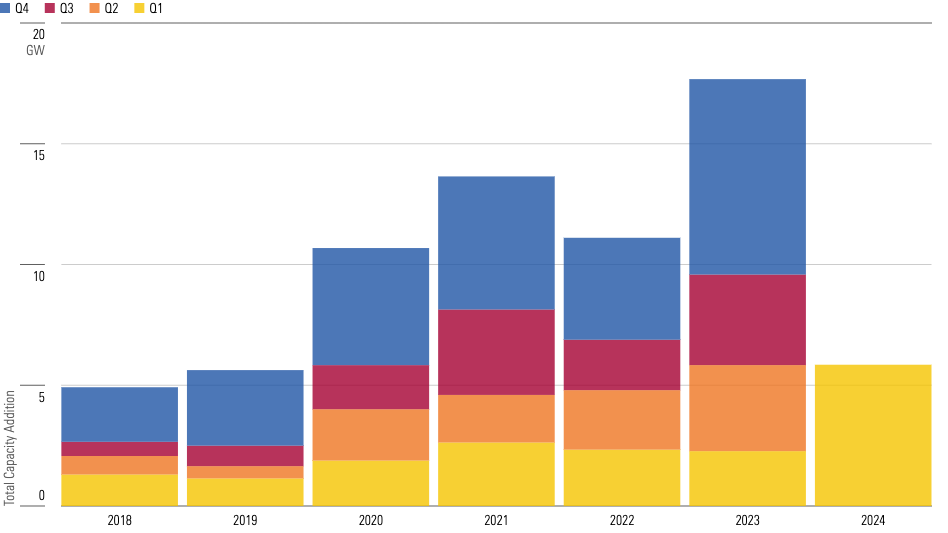
Onshore wind installations, for their part, fell another 30% for a third consecutive quarter, down to 1.26 gigawatts from 1.8 gigawatts in first-quarter 2023, largely because of US tax credit policy.
While we still expect 2024 installations to represent near-trough levels, based on EIA pipeline data, the industry should rebound in the coming years. The Inflation Reduction Act supports a long-term extension of the wind tax credit, which we expect to drive a rebound in industry activity.
GE Vernova GEV, given its leading market share in US onshore wind, should benefit from the anticipated recovery in onshore wind installations in coming years. Improving profitability in the company’s wind segment is a key part to achieving its long-term profitability targets.
Onshore Wind Capacity Should Rebound in Coming Years
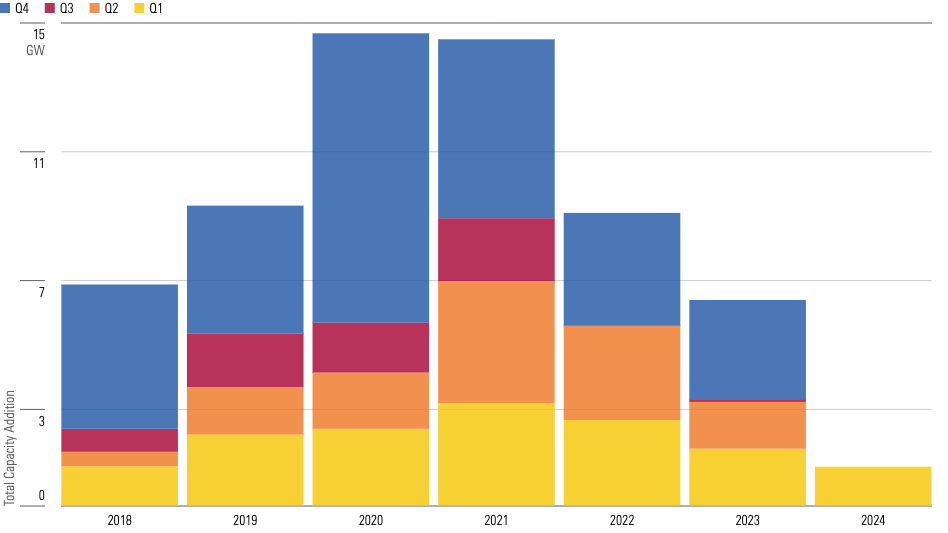
Rooftop Solar Installations: Slowdown in Demand Continues
California’s widely anticipated Net Energy Metering 3.0 policy change came into effect in 2023, spurring a surge in customer demand in the third quarter as customers rushed to install rooftop solar and take advantage of grandfathering under the prior regulatory regime.
However, that demand started to dissipate in fourth-quarter 2023, and it remained weak in first-quarter 2024. We see cost declines or interest rates as key potential catalysts to stimulate non-California demand.
Rooftop Solar Demand Softens in Response to Regulation, Interest Rates
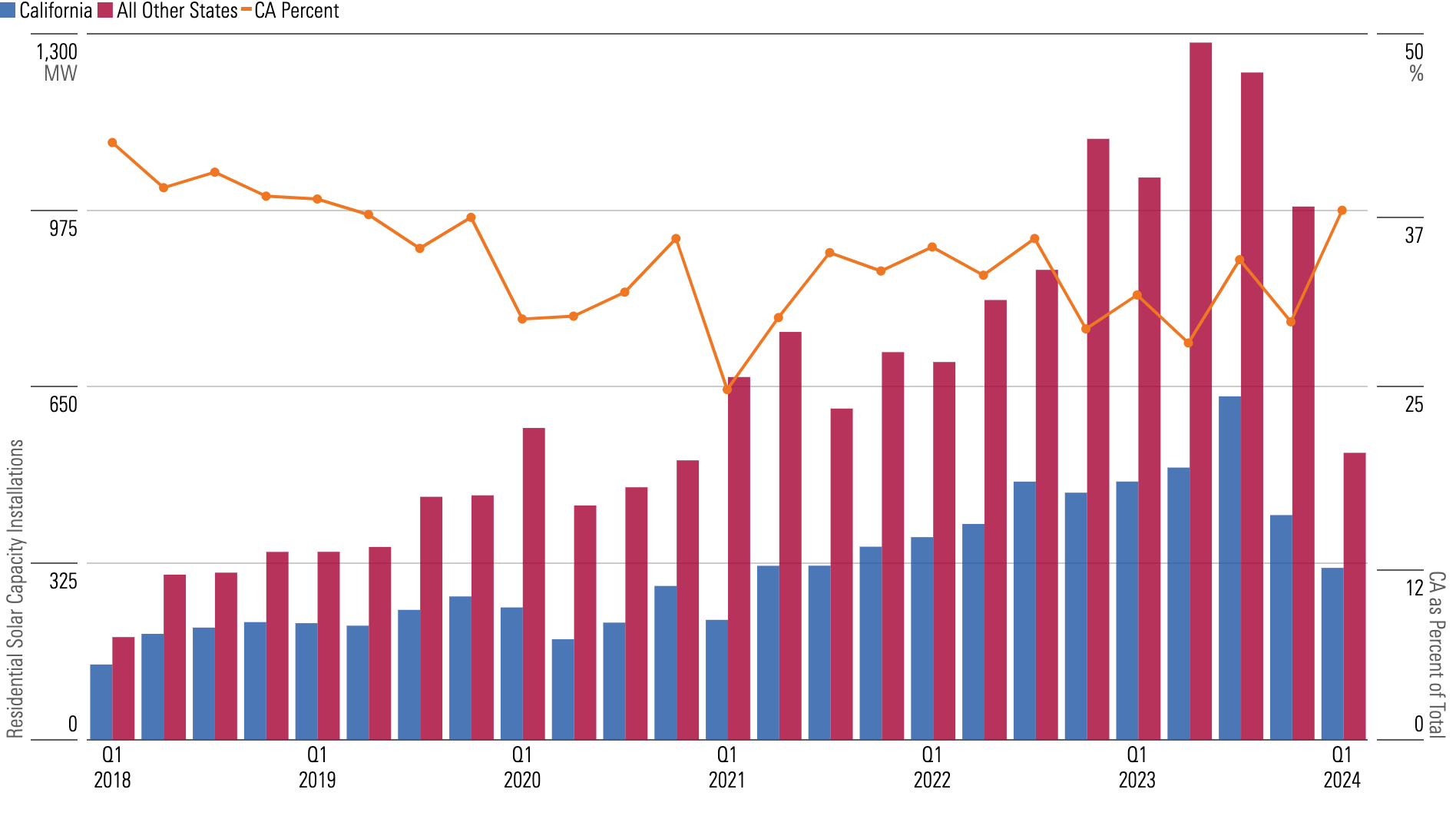
As California adjusts to this new regulatory regime, we expect installations will continue to decrease, but the state will maintain its top spot for installations. It’s states with large populations and low penetration, such as Florida and Texas, that will be critical to long-term rooftop solar growth in the US.
Texas and Florida Are Likely to Account for a Greater Percentage of Installations
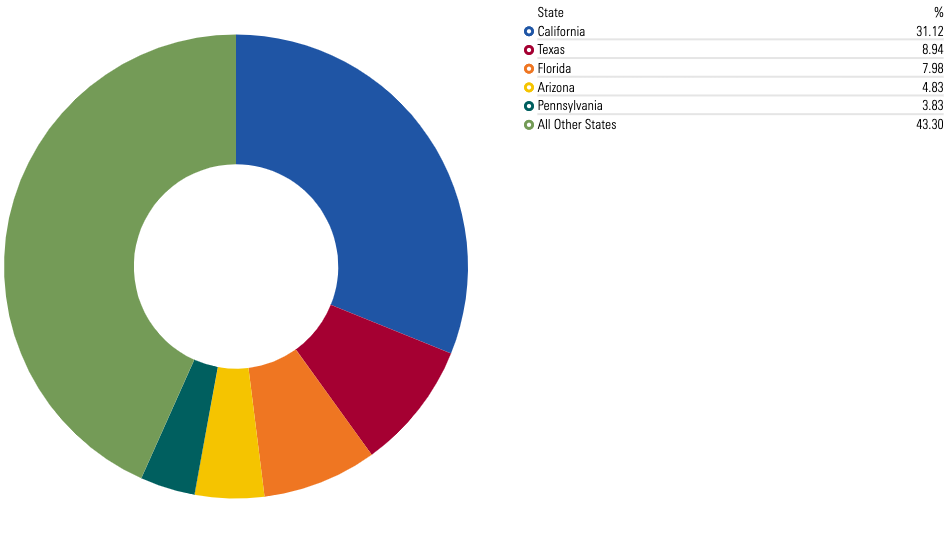
California demand also continues to drive residential battery installations; they increased 33% compared with the same quarter last year. We see this uptick as insight into the rest of 2024 and beyond as battery installations pair well with other renewable sources.
California is seeing a sharp uptick in batteries added to installed solar systems because of the NEM 3.0 policy change. Attachment rates reached approximately 50% in recent months versus roughly 10% a year earlier, and we expect them to continue to rise over the long term.
Our Pick for Investing in the US Renewable Energy Space
We see Brookfield Renewable Partners as the most attractive valuations in the renewable energy space.
Brookfield Renewable Partners BEP
- Morningstar Rating: 3 stars
- Moat Rating: None
- Fair Value Estimate: $28
- Price/Fair Value Estimate (as of June 26, 2024): 0.93
Brookfield Renewable holds a well-diversified global portfolio of clean energy technologies assets. The company targets 12%-15% returns (best-in-class) via a combination of organic growth and mergers and acquisitions. Acquisitions are central to Brookfield’s strategy, in which it invests alongside Brookfield Asset Management’s private equity funds. We think the current market volatility provides opportunities for Brookfield to find attractive deals, as evidenced by its history (Morningstar Capital Allocation Rating of Exemplary).
This article was compiled by Emelia Fredlick.
The author or authors do not own shares in any securities mentioned in this article. Find out about Morningstar’s editorial policies.

/s3.amazonaws.com/arc-authors/morningstar/a3416e63-64d9-4054-99c0-22cd1547b5a2.jpg)
/d10o6nnig0wrdw.cloudfront.net/06-28-2024/t_1377507e2da0485faab7721e212e9baf_name_file_960x540_1600_v4_.jpg)
/cloudfront-us-east-1.images.arcpublishing.com/morningstar/RXEHKWMHQNDBLD3ZFOOZOB5VIU.png)
/cloudfront-us-east-1.images.arcpublishing.com/morningstar/HU3X6PAILNCOVAUSKMJBJCVK6U.jpg)
:quality(80)/s3.amazonaws.com/arc-authors/morningstar/a3416e63-64d9-4054-99c0-22cd1547b5a2.jpg)